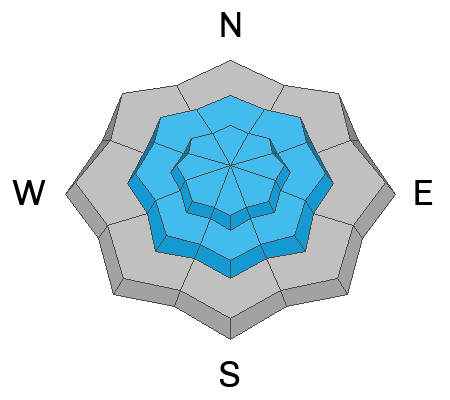This morning, light snow is falling in the mountains, and temperatures range from the upper teens to mid 20s F. Winds have shifted from the south to the northwest, reaching gusts into the 20s mph at mid-elevations and nearly 40 mph at the uppermost elevations. Snowfall persisted overnight, adding 2-5 inches as of 5 AM. This brings the current storm totals to 2-8 inches of snow.
Today, an upper trough will persist over the area before lifting away in the afternoon. Anticipate light snowfall throughout the morning, gradually diminishing by midday. Temperatures will reach the upper 20s and low 30s F. Winds from the west-northwest will persist, remaining moderate with gusts reaching into the upper 30s mph at the higher elevations. There is a possibility of an additional 2 inches of snow before this afternoon.
The upcoming slow-moving storm will impact the region from Sunday evening. A mild southerly to southwesterly flow will persist from Monday into Tuesday, bringing the heaviest precipitation. Expect 12-24 inches of snowfall. Colder air arrives on Wednesday with the upper trough passage.
Ski resorts reported minor dry loose and wet-loose avalanches yesterday. No avalanches were reported from the Ogden area backcountry, but to the South, in the Salt Lake Zone, three large avalanches failing in the PWL over the past week should stay in your mind:
Tuesday -
Skier-triggered avalanche in Days Fork - Explore this
recent podcast episode where the skier shares his experience from Days Fork, providing valuable and personal insights.
These avalanches were all 3-6' deep, well over a hundred feet wide, and running up to 2,000'. The two skier-triggered avalanches were close calls, and luck is not a good strategy when dealing with a PWL.
Photo below looking up at the Day's Fork crown which was up to 6' deep in places.











